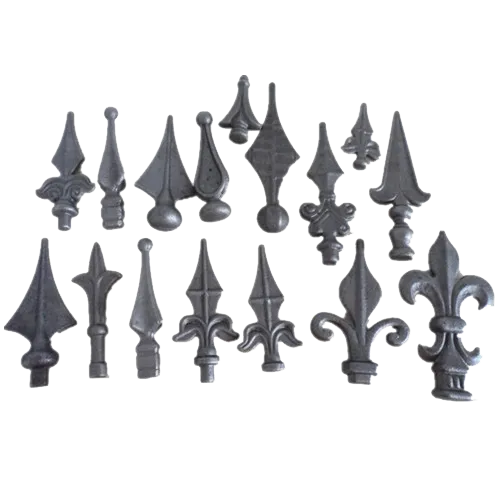Mobile:+86-311-808-126-83
Email:info@ydcastings.com
aluminum green sand casting
Aluminum Green Sand Casting An Overview
Aluminum green sand casting is a widely used method for producing aluminum castings. This process blends traditional casting techniques with modern advancements, making it a favored choice among manufacturers for a variety of applications. Understanding the components, processes, advantages, and applications of aluminum green sand casting can provide insights into why this method is so popular.
What is Green Sand Casting?
Green sand casting refers to a process where moist sand is used to create molds for metal casting. The term green refers to the sand's natural state, containing moisture and not yet cured or hardened, as opposed to dry sand casting methods that involve a cured sand mold. In the case of aluminum casting, the combination of aluminum alloys with green sand offers a balance of strength, durability, and accuracy.
The Components of Green Sand
Green sand is a mixture of silica sand, clay, water, and other additives. The silica sand provides the necessary structural support, while the clay acts as a bonding agent to hold the grains of sand together. Water is essential for activating the clay and providing the moisture required for the mold-making process. Additional materials, such as coal dust or graphite, can be added to enhance certain properties, like surface finish and thermal conductivity.
The Aluminum Casting Process
The aluminum green sand casting process involves several steps
1. Pattern Creation A pattern is made based on the desired shape of the final casting. Patterns can be made from wood, metal, or plastic and are often designed to include allowances for shrinkage and machining.
2. Mold Making The pattern is pressed into a mixture of green sand to create a mold. The mold is typically made in two halves—cope (top half) and drag (bottom half)—to allow for the pattern to be removed.
3. Assembly Once the mold halves are created, they are assembled, and any additional features such as risers or gates are added to facilitate the flow of molten aluminum.
4. Melting the Aluminum Aluminum scrap or ingots are then melted in a furnace, reaching temperatures typically around 700°C (1292°F). During this process, the metal is often treated to enhance its properties.
5. Pouring The molten aluminum is carefully poured into the mold cavity. This step requires precision to minimize defects and ensure a uniform fill.
6. Cooling and Sand Removal After the metal has cooled and solidified, the mold is broken away to reveal the casting. This typically involves vibrating or shaking the mold to loosen the sand.
7. Finishing Operations The casting may undergo various finishing processes, such as sandblasting, machining, or surface treatments to achieve the desired surface quality and dimensional accuracy.
aluminum green sand casting

Advantages of Green Sand Casting
Aluminum green sand casting offers several advantages
- Cost-Effectiveness The materials used in green sand are relatively inexpensive, making it an economical choice for producing aluminum castings.
- Versatility This method can produce a wide range of shapes and sizes, making it suitable for various applications, from automotive parts to industrial components.
- Good Surface Finish With appropriate techniques, aluminum castings can achieve a satisfactory surface finish and dimensional accuracy.
- Rapid Production The speed of the mold-making process allows for quicker turnaround times compared to other casting methods.
Applications of Aluminum Green Sand Casting
Aluminum castings produced through the green sand method are utilized in numerous industries, including
- Automotive Components like engine blocks, transmission housings, and brackets are often cast using this method.
- Aerospace Lightweight aluminum parts are essential in aircraft manufacturing, where performance and weight savings are critical.
- Consumer Products Items such as cookware, tools, and various household items are also produced through aluminum green sand casting.
- Industrial Equipment Various components used in machinery and equipment rely on aluminum castings for their strength and durability.
Conclusion
Aluminum green sand casting is a fundamental manufacturing process in various industries due to its balance of cost, versatility, and efficiency. As technology advances, this traditional method continues to evolve, integrating modern materials and techniques that enhance product quality while meeting the demands of modern engineering.
-
Impeller Technology That Powers Precision in Pump SystemsNewsMay.22,2025
-
Valve Durability Begins with Quality Cast Iron ComponentsNewsMay.22,2025
-
Performance Cooling with Advanced Automobile Water Pump SolutionsNewsMay.22,2025
-
How Motor Housing and Oil Pans Shape Engine PerformanceNewsMay.22,2025
-
How Metal Castings Drive Modern Manufacturing EfficiencyNewsMay.22,2025
-
Exploring the Engineering Behind Valve Body CastingsNewsMay.22,2025











